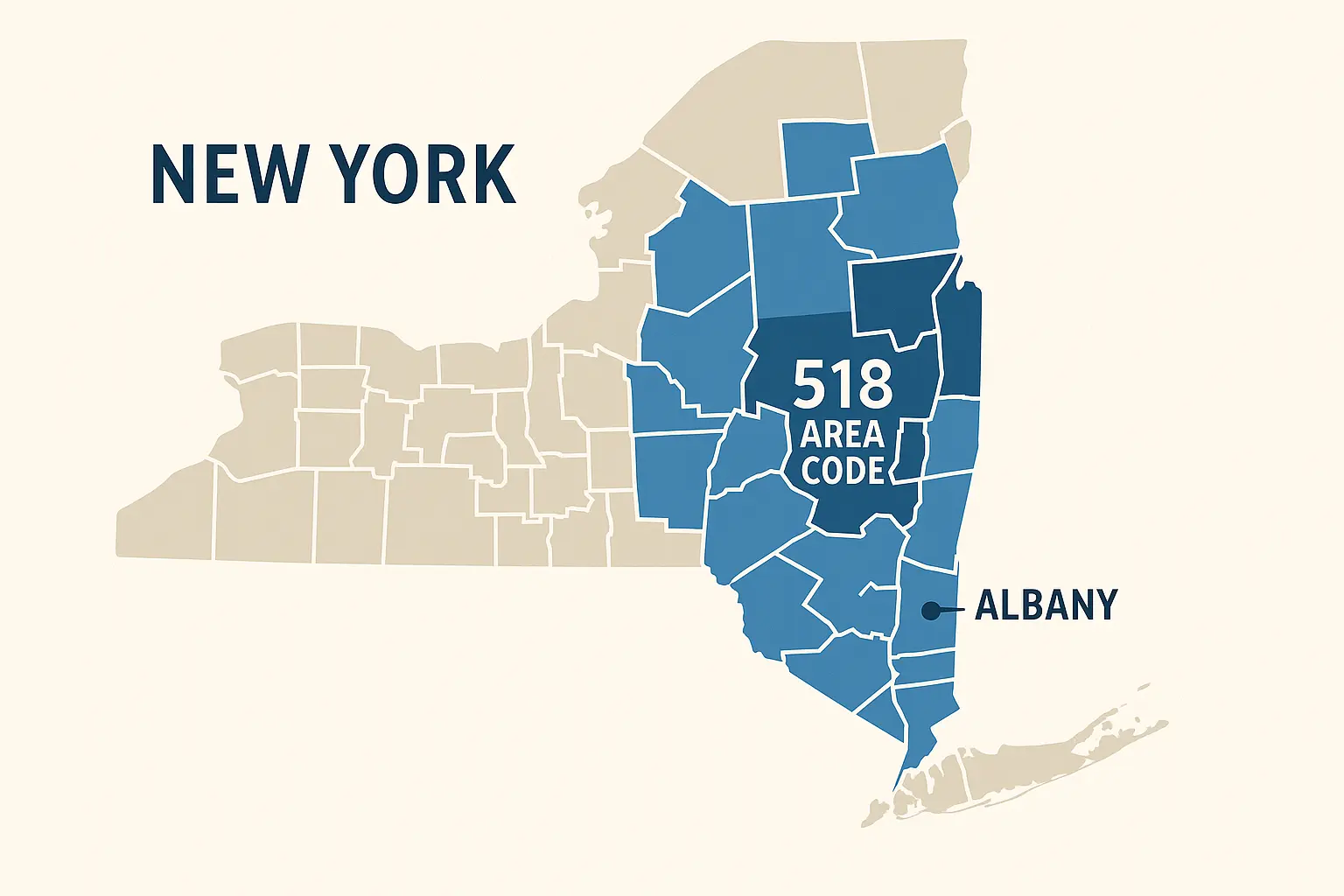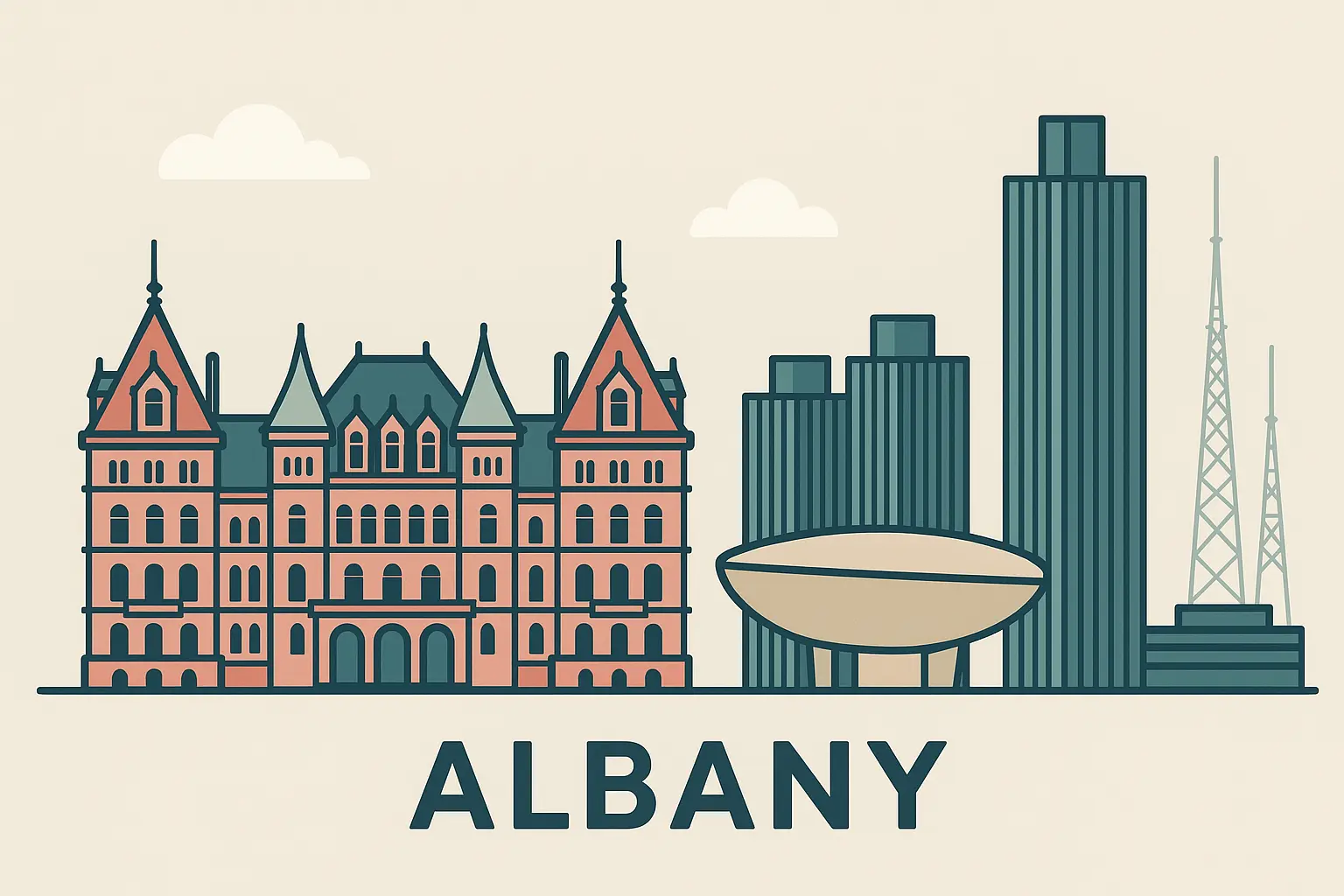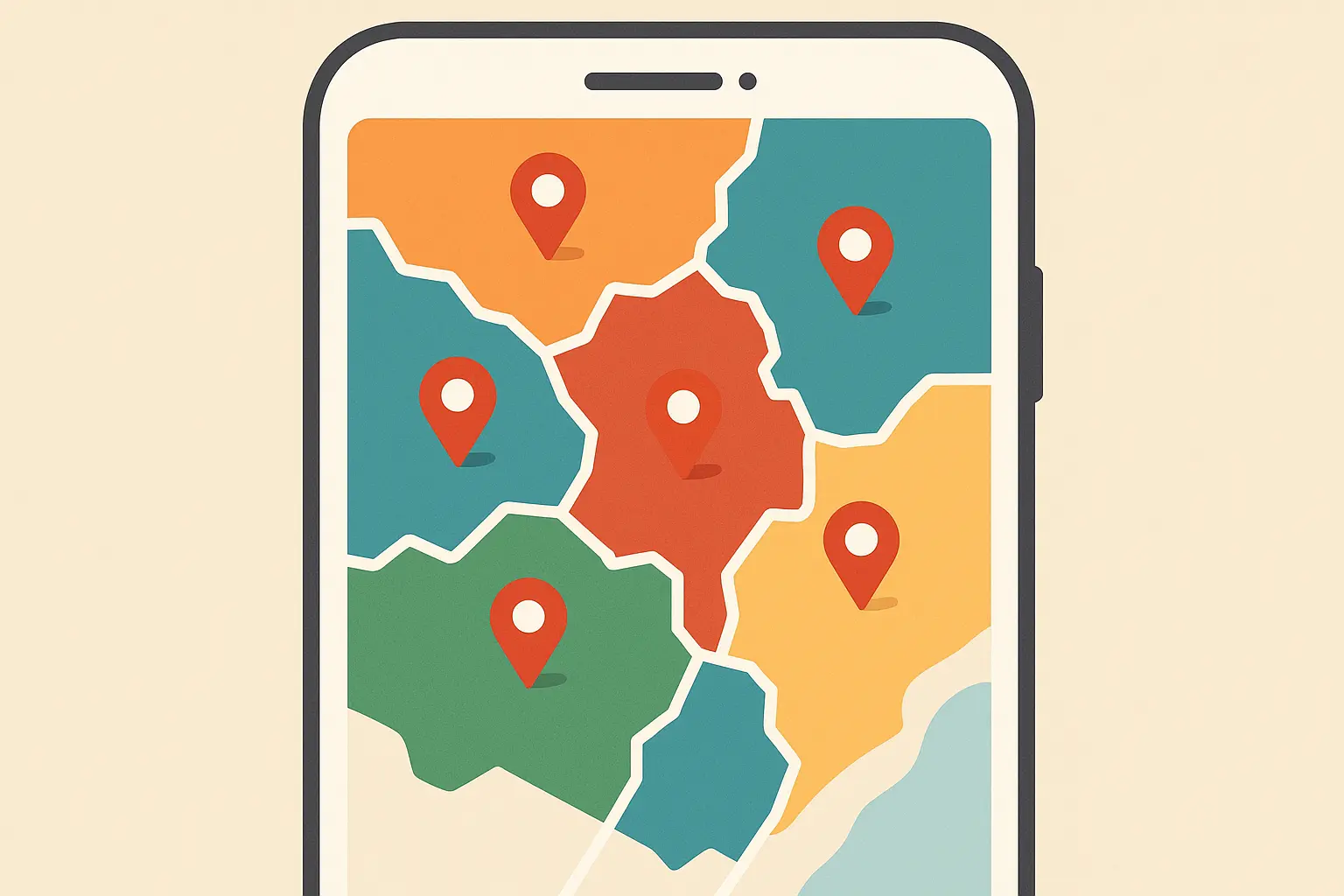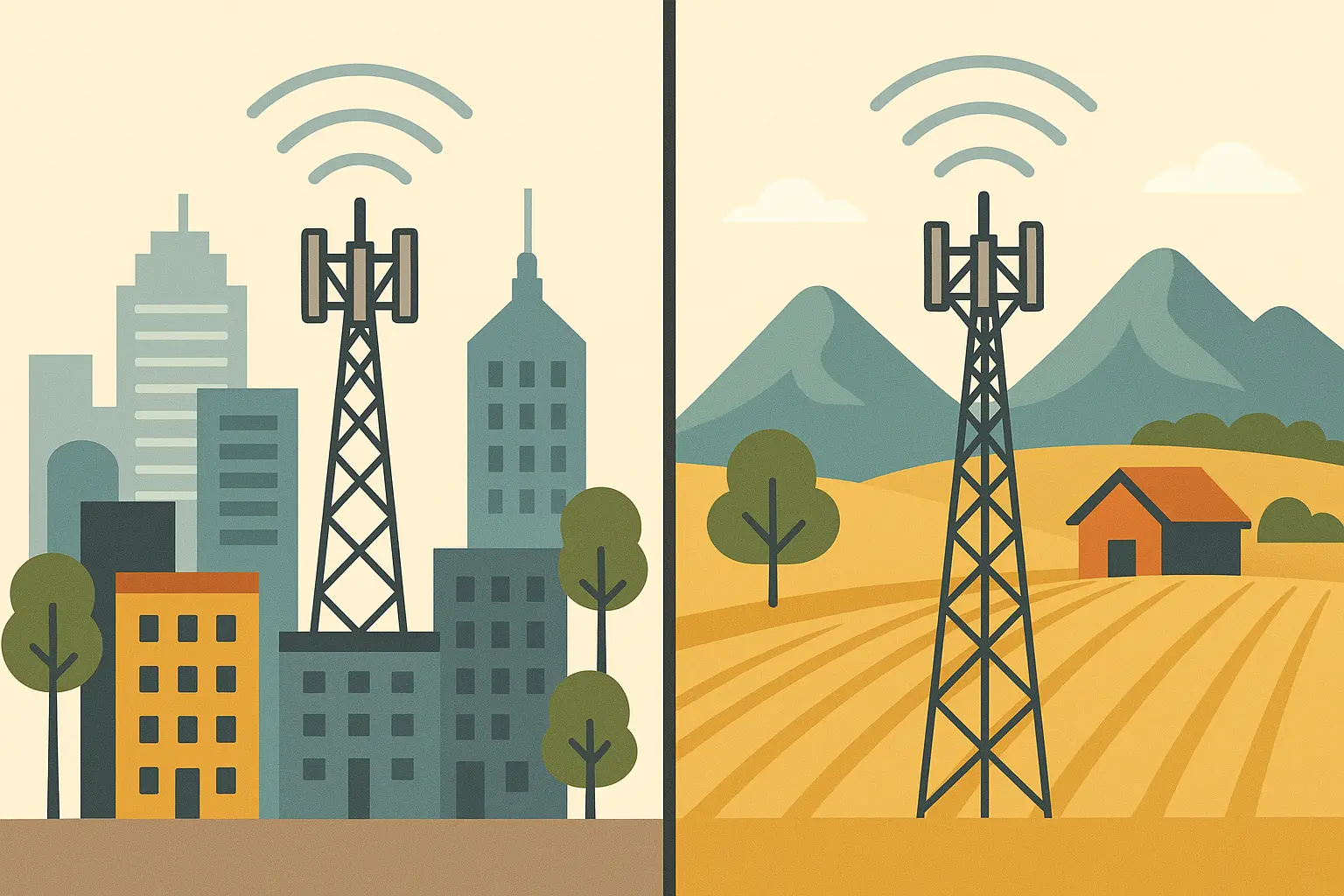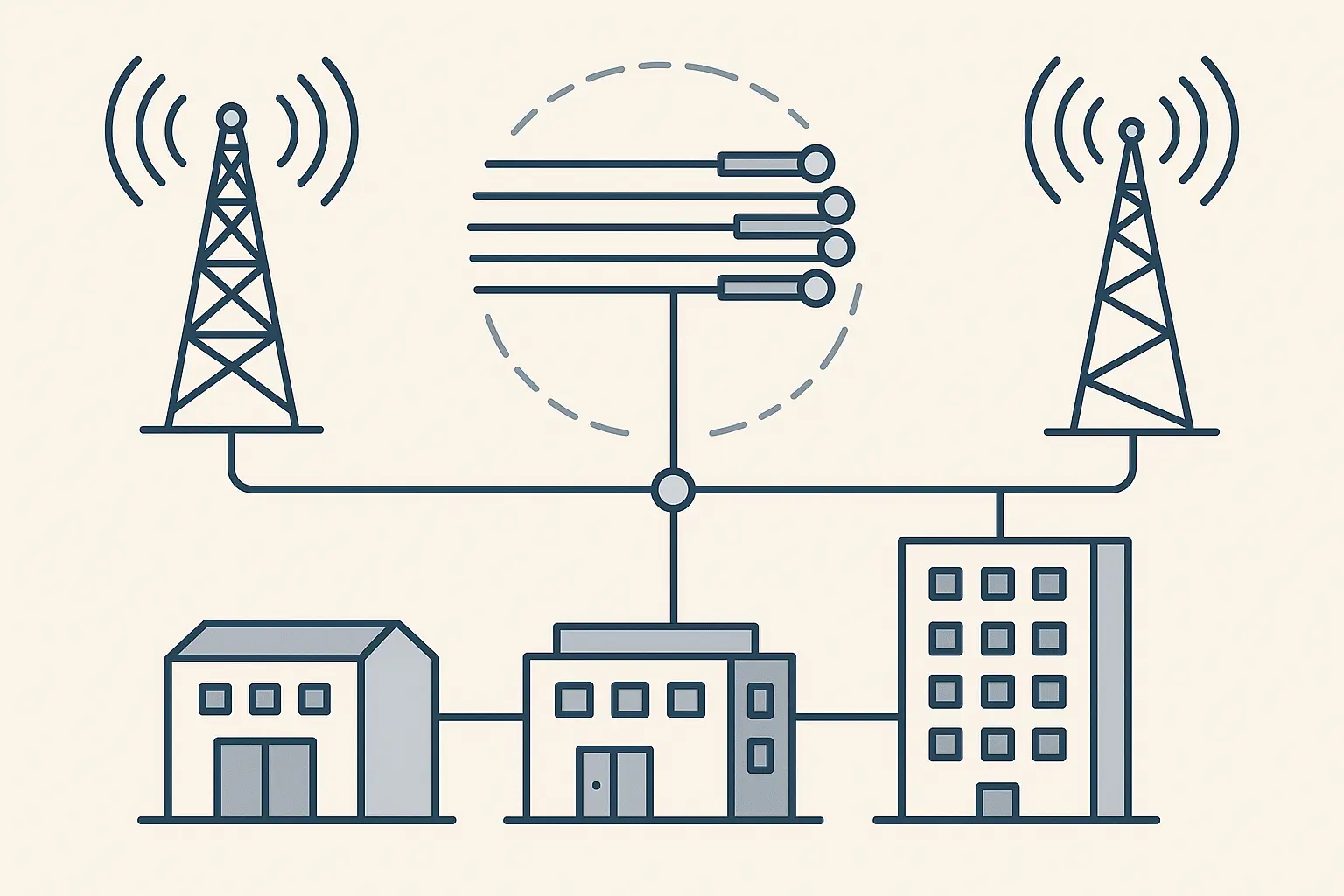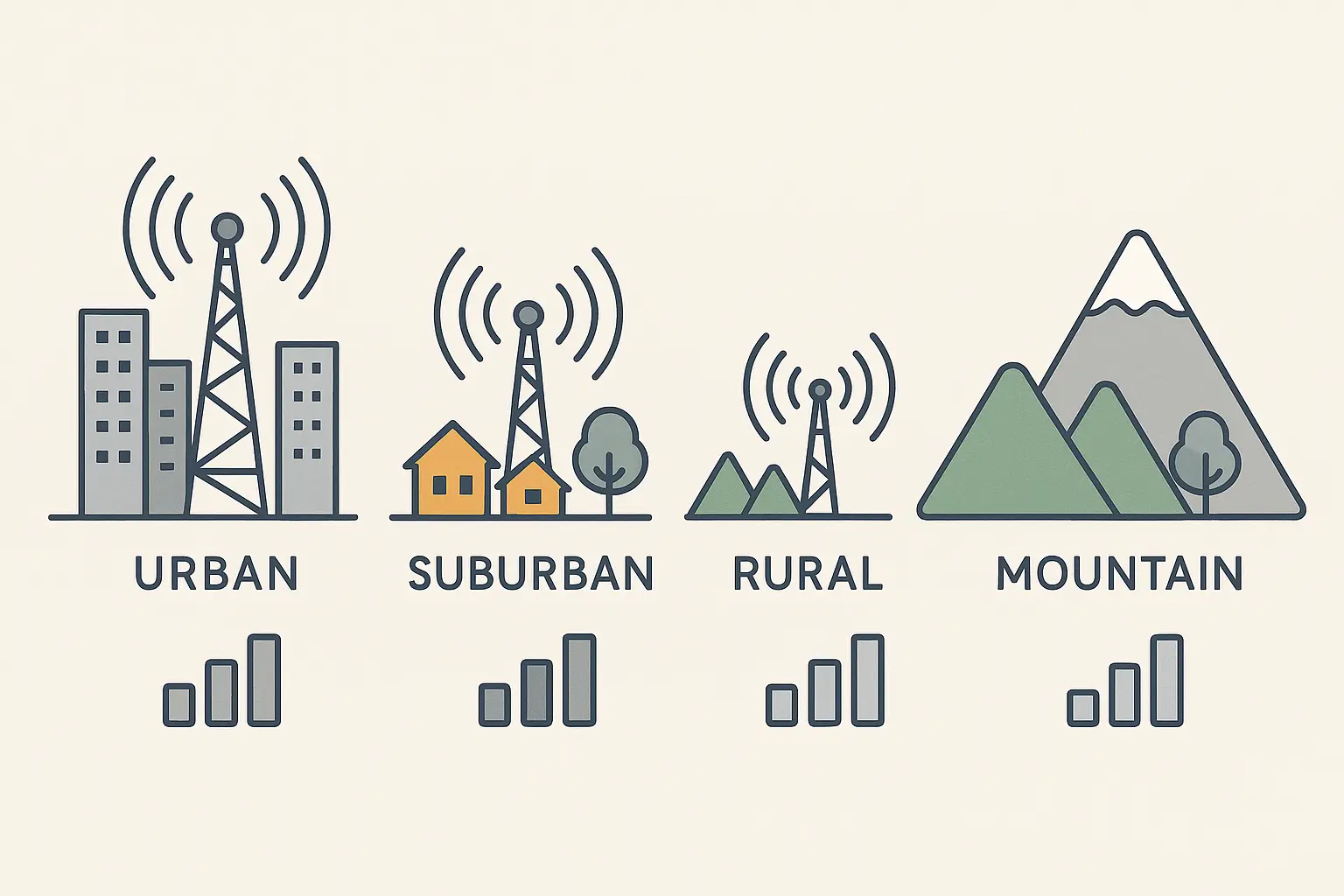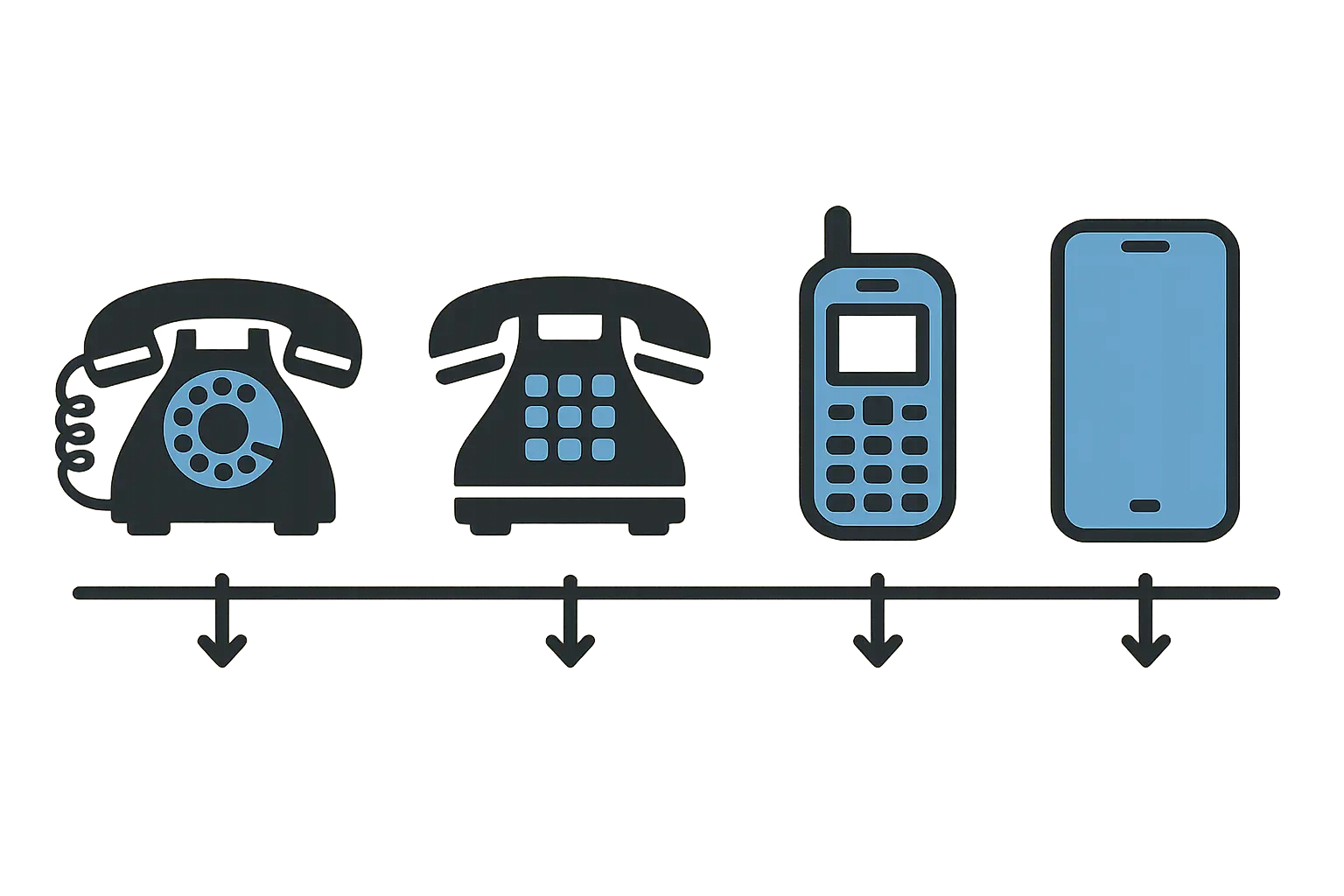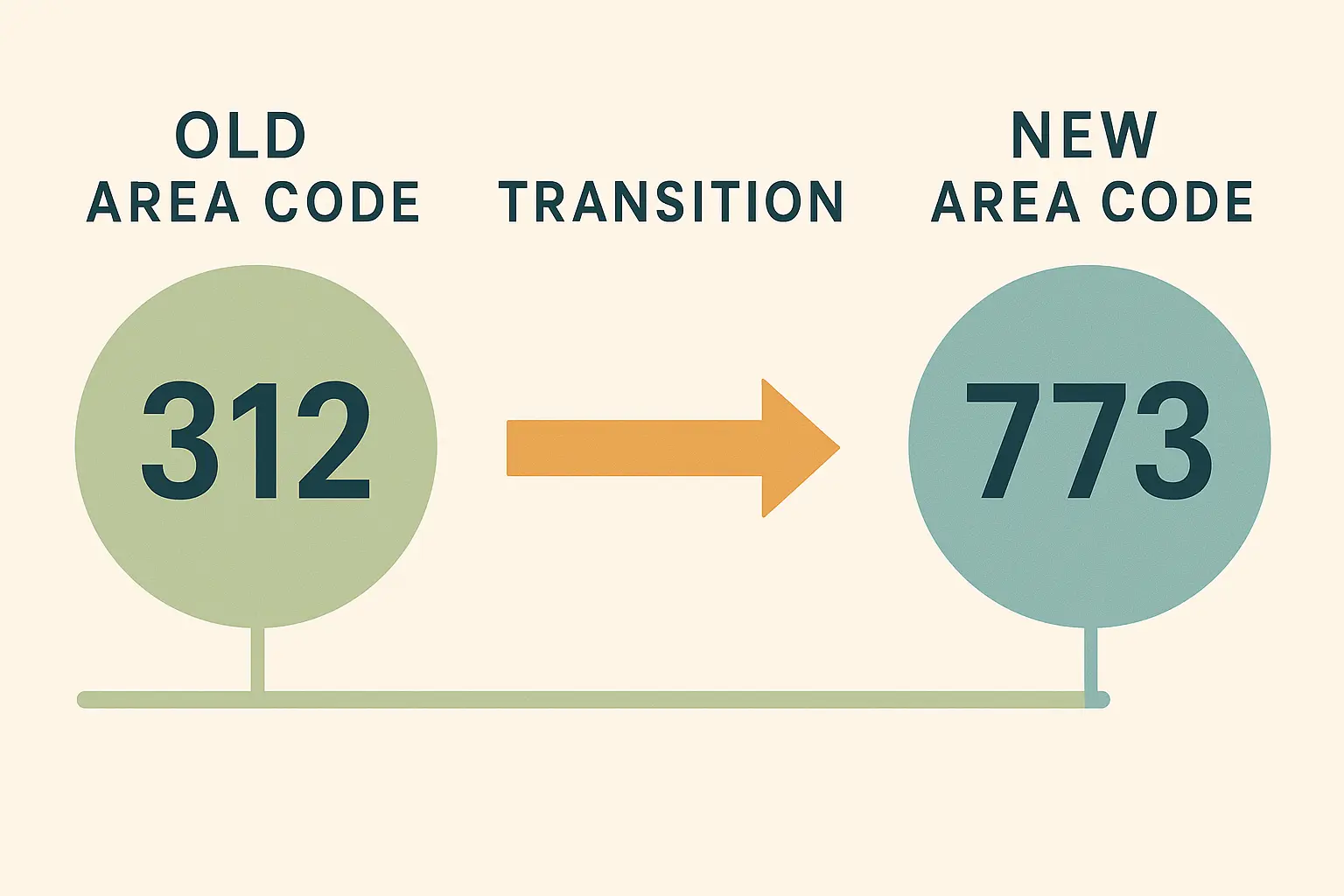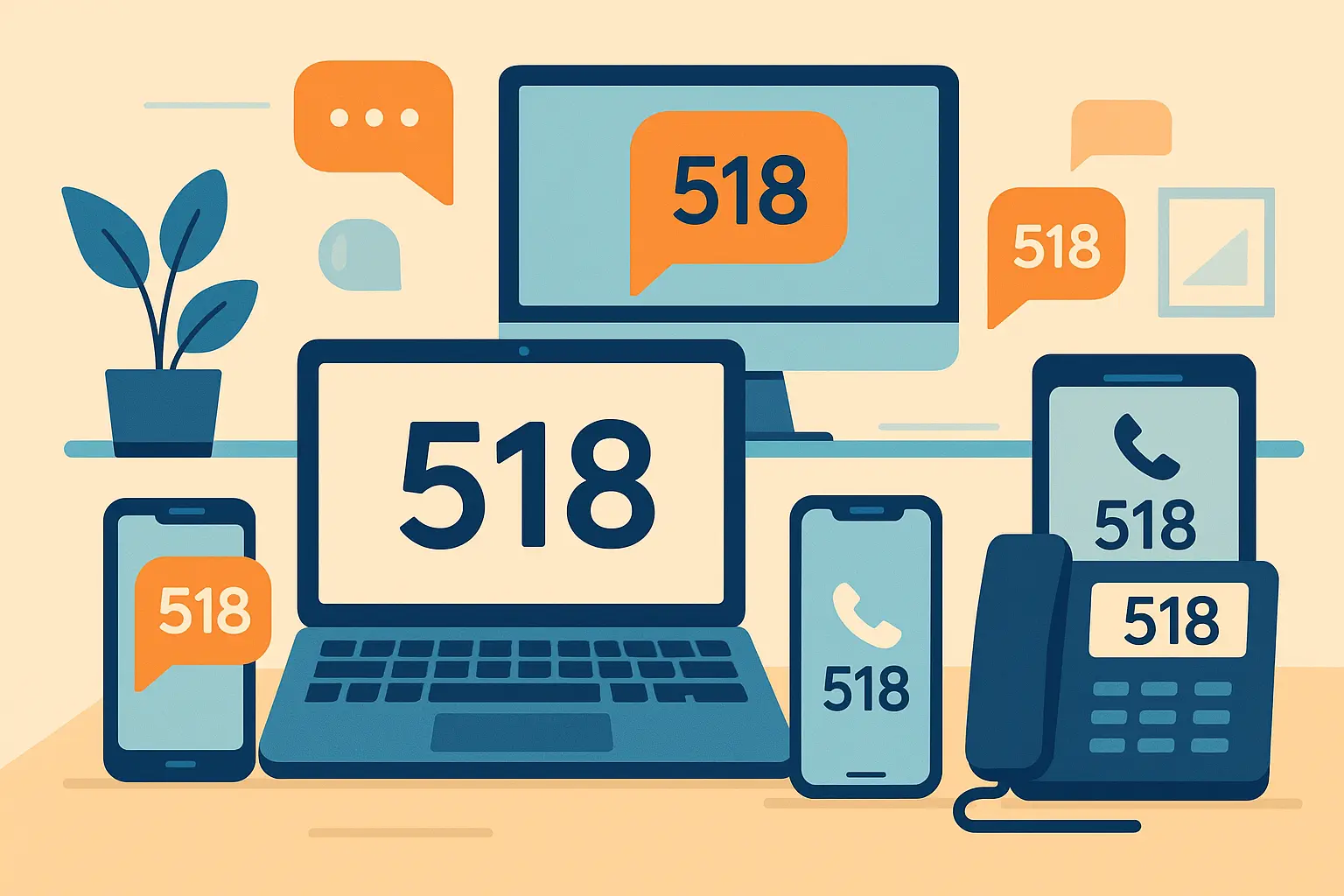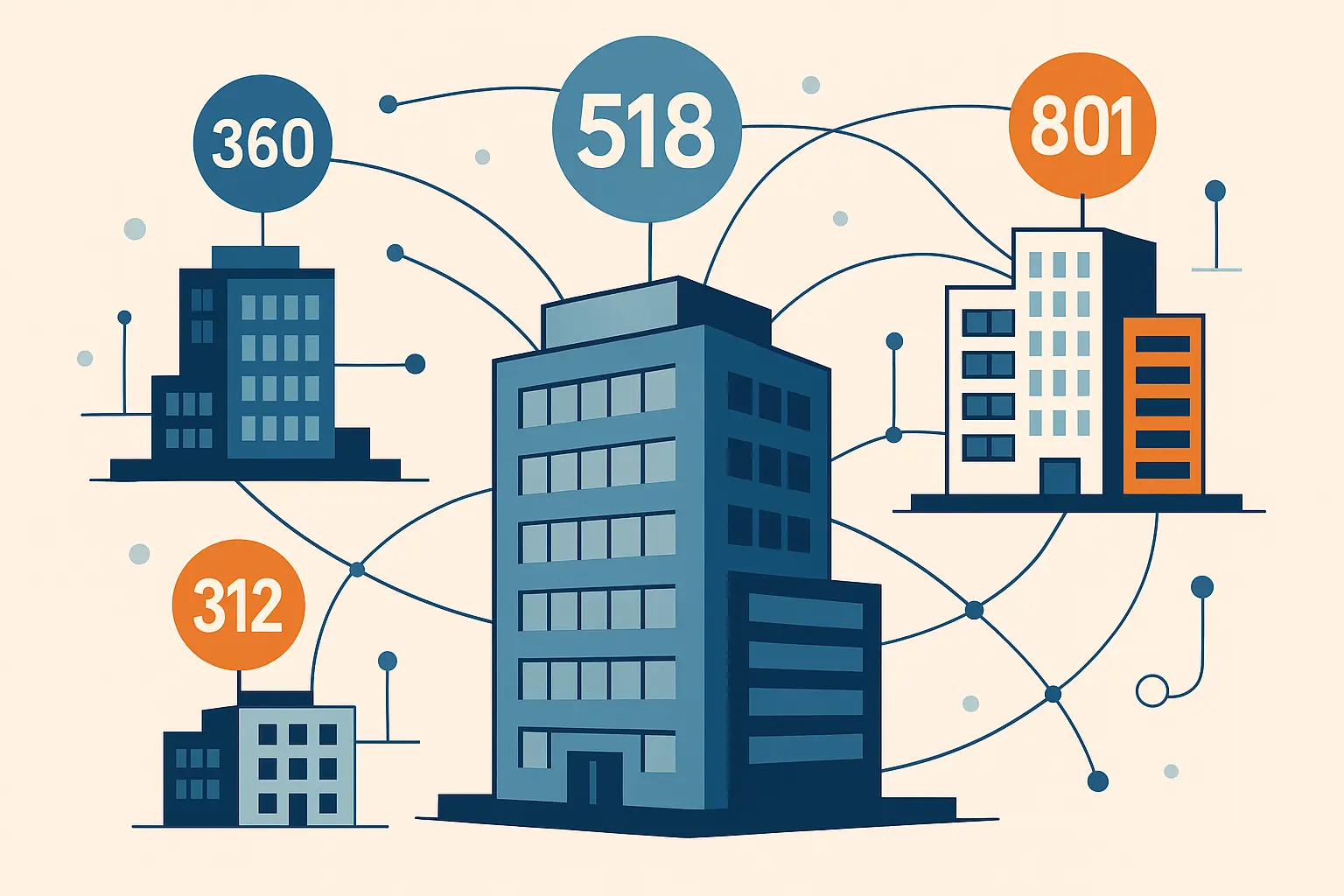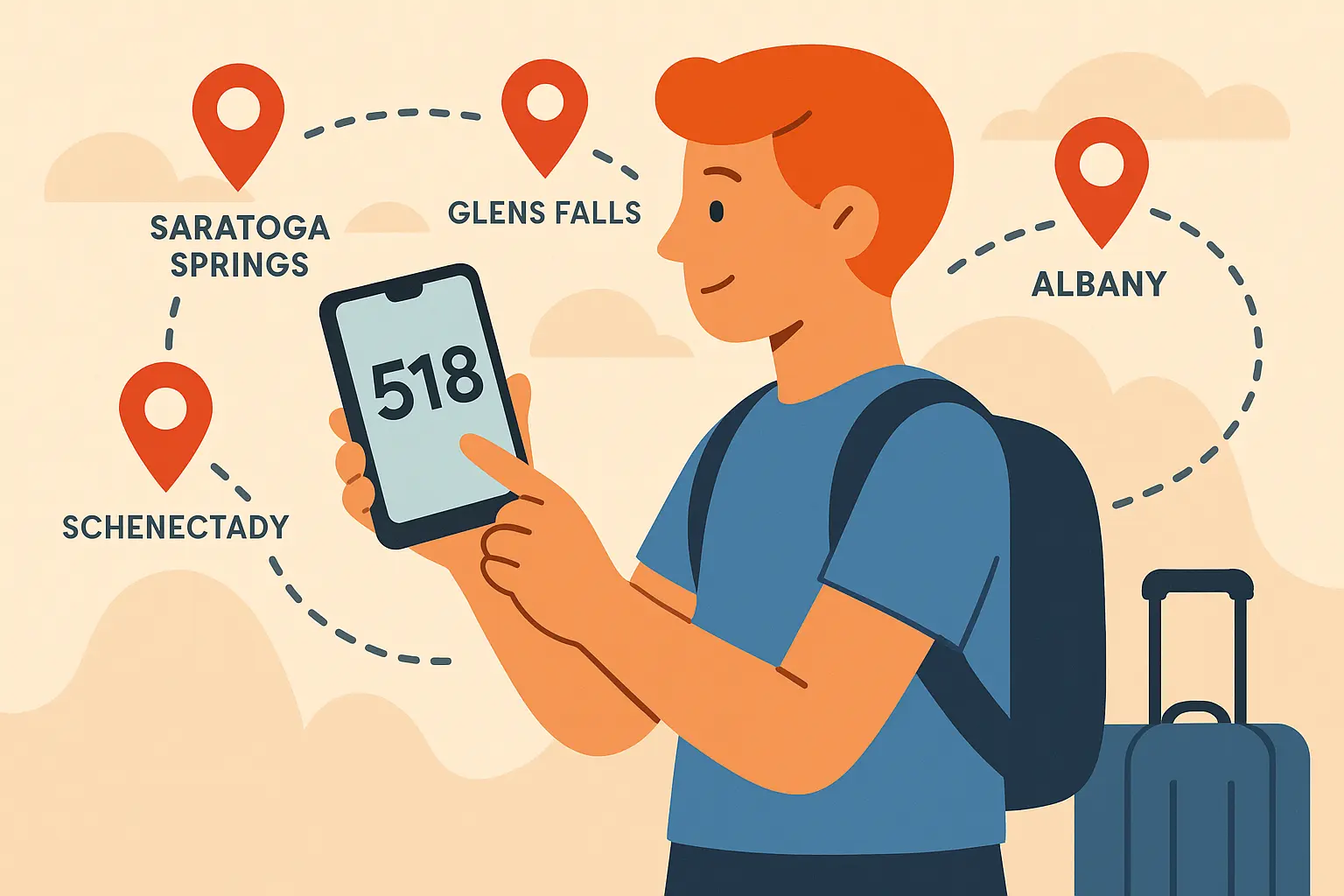Got a 518 number? You’re part of something bigger than you might think. Sure, everyone knows it covers Albany and the surrounding areas, but after living here for years, I’ve discovered there’s a whole world of quirks, changes, and opportunities hiding behind those three digits that most people never hear about.
Your local number spans 17 central and upstate counties according to the New York State Public Service Commission, making it one of the most geographically diverse area codes in the state. From bustling government offices in Albany to quiet rural communities in Washington County, this three-digit code connects an incredibly varied landscape of people and businesses.
Table of Contents
Table of Contents
-
Where Your 518 Number Actually Works (And Where It Doesn’t)
-
The Hidden Infrastructure Behind Every 518 Call
-
Why Your Area Code Might Change (And When)
-
Making Your 518 Number Work Harder for You
TL;DR
-
Your 518 number covers New York’s Capital Region, centered around Albany and extending to Schenectady, Troy, and Saratoga Springs
-
Complex phone systems manage number allocation through central office codes and carrier competition
-
Number exhaustion could trigger an overlay implementation in the future
-
Businesses leverage local numbers for credibility while residents value number portability
-
SMS forwarding services can enhance communication management across multiple platforms
Where Your 518 Number Actually Works (And Where It Doesn’t)
Your local number covers a surprisingly large chunk of northeastern New York, but the boundaries aren’t always where you’d expect them to be. I’ve seen plenty of confusion when people assume their number works everywhere in the Capital Region, only to discover some communities fall outside the coverage area.
Understanding exactly where your number functions helps you navigate everything from local business calls to emergency services. The coverage extends far beyond Albany’s city limits, reaching into rural communities that many people forget are part of the same phone network.
|
County |
Primary Cities |
Coverage Status |
Population Density |
|---|---|---|---|
|
Albany |
Albany, Colonie |
Full Coverage |
High |
|
Schenectady |
Schenectady, Rotterdam |
Full Coverage |
Medium |
|
Rensselaer |
Troy, East Greenbush |
Full Coverage |
Medium |
|
Saratoga |
Saratoga Springs, Clifton Park |
Full Coverage |
Medium |
|
Warren |
Glens Falls, Queensbury |
Full Coverage |
Low |
|
Washington |
Hudson Falls, Cambridge |
Full Coverage |
Low |
|
Columbia |
Hudson, Kinderhook |
Partial Coverage |
Low |
Why Albany Feels Like the Center of the 518 Universe
Albany serves as the nerve center for the entire system, and there’s good reason for that. As New York’s state capital, the city houses an enormous concentration of government offices, each requiring dedicated phone lines and reliable service.
Having Albany as the hub makes perfect sense when you consider the sheer volume of official communications flowing through the city daily. Every state agency, legislative office, and public service department needs consistent, reliable phone service to maintain operations and serve constituents effectively.
How Albany Became the 518 Headquarters
Government operations naturally created the highest demand for phone services in the region. When 518 was established, Albany’s concentration of state offices made it the logical choice for the primary hub.
Consider the New York State Capitol building, completed in 1899, which houses hundreds of government offices requiring dedicated phone lines. Each legislative office, administrative department, and public service area needs reliable numbers to maintain constituent communication. This concentration of government activity established Albany as the natural hub for the entire region.
According to data from ZIP-Codes.com, the region encompasses multiple zip codes across the Capital Region, with demographic information based on U.S. Census data that helps phone companies understand population distribution and service needs.
Beyond the Capitol Building – Albany’s Communication Network
The city’s phone demands extend well beyond government buildings. Universities, medical centers, and diverse business districts all contribute to the complex network that makes Albany the regional communications hub.
SUNY Albany alone generates thousands of phone numbers for dormitories, academic departments, and administrative offices. Albany Medical Center requires extensive phone infrastructure for patient care, emergency services, and coordination between multiple facilities. Each sector adds layers of complexity to the area’s phone landscape.
How Albany’s Growth Affects Your Service
Population growth and business expansion in Albany directly impact how quickly new numbers get assigned and where carriers invest in infrastructure improvements. Urban development patterns influence network capacity and service quality throughout the region.
When new residential developments or business parks open in Albany, they create immediate demand for hundreds or thousands of new phone numbers. This growth pattern affects number availability for everyone in the region, since Albany’s expansion consumes a significant portion of available numbers.
The Surprising Reach of 518 Territory
Many people don’t realize how far the coverage extends beyond Albany. The territory includes everything from the Adirondack foothills to the Vermont border, encompassing communities that feel worlds apart from the state capital.
Where your local coverage reaches might surprise you – it includes resort towns, farming communities, and industrial centers that each bring unique phone service needs to the network. This diversity creates interesting challenges for carriers trying to provide consistent service across such varied terrain.
Your Coverage Map Decoded
Digital mapping tools show precise boundaries, but interpreting these maps requires understanding how coverage zones work. Interactive tools help verify whether specific addresses fall within 518 territory, which becomes crucial when you’re setting up new service or verifying coverage for business purposes.
The coverage map reveals some interesting quirks in boundaries. Some communities that seem geographically connected to the Capital Region actually use different area codes, while others that feel remote are firmly within 518 territory.
Border Towns That Keep You Guessing
Communities near boundaries sometimes create confusion about which numbers they should use. I’ve encountered situations where neighboring streets use different area codes, or where businesses serve customers from multiple regions.
These border situations require verification with carriers or phone authorities to ensure you’re getting the right code for your specific location. Geographic boundaries don’t always follow logical patterns, especially in rural areas where coverage zones might follow historical phone infrastructure rather than municipal boundaries.
From City Streets to Country Roads – 518’s Diverse Landscape
The contrast between urban Albany and rural Washington County shows just how diverse the region really is. Each area brings different phone service challenges and opportunities that shape how the entire system operates.
Urban Powerhouses Driving 518 Demand
Major cities generate the highest phone traffic and receive priority for infrastructure investments. Albany, Schenectady, and Troy create the bulk of demand that drives carrier decisions about network upgrades and service expansion.
These population centers influence everything from cell tower placement to fiber optic cable routing. When carriers plan infrastructure improvements, they focus first on areas with the highest user density and business activity.
Rural Communities Making 518 Work
Extensive rural areas throughout the region face unique challenges in receiving consistent phone service. Geographic obstacles and lower population density affect how carriers approach infrastructure development in these areas.
Based on ZipCode.org demographic data from the 2000 Census, the average persons per household varies significantly between urban and rural areas, affecting how carriers plan infrastructure investments and service deployment strategies.
Mountain terrain, sparse population, and long distances between communities make rural service more expensive to provide. Carriers must balance service quality with economic viability when serving these areas.
The Economic Engine Behind Your Number
New York’s capital region brings special phone demands from government operations, educational institutions, and business sectors. These economic drivers create usage patterns that influence how the entire system operates and evolves.
Government communications require high reliability and security standards that affect infrastructure investments throughout the region. Educational institutions need capacity for thousands of simultaneous users during peak periods. Business sectors demand advanced features and integration capabilities that push carriers to offer more sophisticated services.
The Hidden Infrastructure Behind Every 518 Call
Ever wonder what happens when you dial a local number? There’s actually a pretty cool system working behind the scenes that most people never think about. The process of getting your call from point A to point B involves multiple systems, regulatory oversight, and competitive dynamics that shape your service experience.
Your local code operates within the North American Numbering Plan, which establishes the rules for how numbers get assigned and managed. Understanding this system helps explain why certain numbers are available while others aren’t, and how carriers coordinate to keep everything running smoothly.
How Your Number Gets Assigned (It’s More Complex Than You Think)
The process of distributing numbers follows specific protocols established by phone regulatory bodies. Number assignment isn’t random – it follows systematic patterns that help carriers manage their inventory and route calls efficiently.
The three digits after your area code connect to specific geographic areas and phone providers. These codes determine routing paths and help carriers manage network traffic efficiently.
Cracking the Code – Those Middle Three Digits Explained
The number 518-474 specifically serves government buildings in Albany, including the Empire State Plaza complex. When you call any number starting with 518-474, your call routes through phone equipment designed to handle the high volume of government communications. This dedicated infrastructure ensures reliable service for critical state operations while managing the complex routing requirements of a major government center.
Different middle codes serve different purposes and geographic areas within the region. Some codes are reserved for specific types of services, while others serve particular neighborhoods or business districts.
For businesses managing multiple phone systems, understanding proper US phone number formatting becomes crucial when coordinating communications across different platforms and ensuring consistent contact information display.
Taking Your Number Anywhere – Portability Rules
Rules that let you keep your number when switching between service providers require complex coordination between carriers but give consumers more flexibility in choosing services.
When you port your number, the old carrier must release it to the new carrier while maintaining service continuity. This process involves database updates, routing changes, and coordination between multiple systems to ensure your calls reach the right destination.
The Battle for Your Business
Multiple phone companies compete intensively to serve the region, each offering different combinations of services and coverage priorities. Understanding the competitive landscape helps you make informed decisions about carriers and service plans.
The competition for customers drives innovation and service improvements, but it also creates complexity in choosing the right provider for your needs.
Major Players Fighting for 518 Territory
Large national carriers and regional providers compete throughout the coverage area, offering various combinations of voice, data, and messaging services. Each company brings different strengths and coverage priorities to the market.
|
Service Feature |
Traditional Landline |
VoIP Services |
Mobile Carriers |
Business Solutions |
|---|---|---|---|---|
|
Local Presence |
Established |
Growing |
Dominant |
Flexible |
|
Cost Structure |
Fixed Monthly |
Variable |
Per-Line |
Scalable |
|
Advanced Features |
Limited |
Extensive |
Moderate |
Comprehensive |
|
Reliability |
High |
Moderate |
Variable |
High |
|
Setup Complexity |
Simple |
Moderate |
Simple |
Complex |
|
Portability |
Limited |
High |
High |
High |
National carriers focus on broad coverage and standardized services, while regional providers often offer more personalized service and local expertise. The choice between them depends on your specific needs and priorities.
Service Quality Reality Check
Network infrastructure quality varies significantly across the region, with urban areas typically receiving more robust coverage than rural locations. Geographic challenges and investment priorities create these service disparities.
Albany and surrounding urban areas enjoy multiple carrier options with overlapping coverage, creating competition that drives service improvements. Rural areas might have fewer options but often receive more personalized attention from regional carriers.
Traditional vs. Modern – The Communication Evolution
The phone market features ongoing competition between traditional landline providers, wireless carriers, and internet-based services. Each technology offers different advantages for various user needs and preferences.
Traditional landlines still serve important roles in government offices and businesses that require maximum reliability. Internet-based services offer advanced features and cost savings for tech-savvy users. Mobile carriers dominate personal communications but face challenges in providing consistent coverage across the diverse landscape.
Will You Have to Give Up Your 518 Number?
Growing demand for phone numbers in the Capital Region could eventually require changes to the system. Phone planners continuously monitor number usage patterns to predict when additional numbering resources might be needed.
The possibility of area code 838 implementation has been discussed as a solution to potential number exhaustion. Understanding these projections helps residents and businesses prepare for potential changes that could affect their communication strategies.
The Numbers Game – When 518 Runs Out
According to Spotlight News, the North American Numbering Plan Administrator originally predicted that numbers would run out in early 2019, but that forecast was amended to reflect an “unprecedented” increase in demand for numbers in the region, causing the New York State Public Service Commission to shorten the implementation timeline for area code relief.
Similar exhaustion challenges are occurring statewide. The Norwood News reports that New York’s phone infrastructure faces growing pressure, with Commission Chair Rory M. Christian stating “With increased telephone usage, we must accommodate the growing demand for phone numbers,” highlighting the statewide nature of this challenge.
Tracking 518’s Number Appetite
Analysis of current number assignment rates reveals how quickly available numbers are being allocated to new customers and services. Business growth, population increases, and the proliferation of connected devices all contribute to accelerating demand.
Each new business location, residential development, or technology deployment requires multiple phone numbers. Smart home devices, security systems, and connected applications create demand that previous generations never anticipated.
Growth Signals That Could Trigger Changes
Population growth and business expansion in the Capital Region directly influence future demand for new telephone numbers. Economic development patterns and demographic trends provide clues about upcoming phone service needs.
Major development projects in Albany and surrounding areas can consume hundreds of numbers at once. When Amazon or other large employers establish operations in the region, they create immediate demand for extensive phone resources.
Your Future Options (Overlay vs. Split Scenarios)
When number exhaustion approaches, phone authorities must choose between implementing an overlay or splitting the existing region. Each option presents different advantages and challenges for existing users.
The Press Connects reports that the state Public Service Commission has approved an “overlay” in the 17-county region to meet demand for new phone numbers, meaning existing numbers will keep 518 and new ones will get a new 838 area code.
Overlay Implementation – What It Means for You
An overlay would serve the same geographic region as 518, requiring 10-digit dialing for all calls. This option preserves existing numbers but changes dialing habits for everyone in the region.
When the 838 overlay was implemented, residents had to adjust their dialing habits gradually. During the transition period, both 7-digit and 10-digit dialing worked for local calls. However, once the mandatory period began, calling your neighbor down the street required dialing all 10 digits (518-555-1234) instead of just the seven-digit number (555-1234). This change affected everything from speed dial settings to business cards and advertising materials.
518 Transition Checklist:
-
Update all business stationery and marketing materials to include area code
-
Reprogram automatic dialing equipment and security systems
-
Update contact lists in mobile phones and computers
-
Modify voicemail greetings to include full 10-digit number
-
Check fax machines and internet dial-up settings
-
Update alarm systems and gate access controls
-
Revise call forwarding and speed dial settings
-
Update personal checks and ID tags with area code
Minimizing Disruption During Transitions
Any changes to the area code structure require careful planning to minimize disruption to existing customers and businesses. Phone authorities must balance efficiency with user convenience when implementing new systems.
Grace periods allow gradual adjustment to new dialing requirements. Public education campaigns help residents and businesses prepare for changes before they become mandatory. Carrier coordination ensures that technical systems can handle both old and new dialing patterns during transition periods.
Making Your 518 Number Work Harder for You
Whether you’re running a business or managing personal communications in the region, understanding how to leverage your local number effectively can improve your communication strategy. Your number represents more than just a way for people to reach you – it’s a connection to the Capital Region community and all the opportunities that brings.
Modern phone services offer numerous ways to enhance the functionality of your local connection. From advanced call routing to integrated messaging systems, there are tools available that can transform how you handle communications.
Business Success with Your 518 Identity
Companies operating within the region can use various phone strategies to maintain effective communication with customers, partners, and employees. Local numbers provide credibility while advanced features enhance functionality.
Having a local presence immediately signals to customers that you’re part of the community. This connection matters more than many businesses realize, especially when competing against national companies that might seem less accessible or invested in the region.
Local Credibility That Actually Matters
Having a local number provides businesses with immediate recognition and credibility within the Capital Region market. Customers often prefer dealing with companies that display local area codes, viewing them as more accessible and trustworthy.
The 4Voice telecommunications service emphasizes that “the Albany-Colonie Regional Chamber provides many valuable resources to local businesses wanting to establish a presence in the area” and that having a local presence helps businesses connect with the community and build trust with local customers.
Government contractors particularly benefit from maintaining local numbers, since state agencies often prefer working with local vendors. Educational institutions and healthcare organizations also value local phone partnerships that demonstrate community commitment.
Many Capital Region businesses optimize their communication workflows by implementing text message forwarding to email systems, ensuring important customer communications from their numbers reach the right team members instantly.
Managing Multiple Locations with 518 Strategy
Businesses operating across multiple area codes need sophisticated numbering strategies to maintain consistent communication. Balancing local presence with operational efficiency requires careful planning and often involves advanced phone solutions.
Companies with distributed teams often benefit from forwarding SMS messages to Slack channels, allowing seamless coordination between local operations and remote locations while maintaining centralized communication oversight.
Multi-location businesses face unique challenges in maintaining local identity while achieving operational efficiency. Some companies maintain separate numbers for different departments or services, while others use call routing to direct customers to appropriate locations based on their needs.
Personal Communication Mastery in 518 Territory
Residents of the region have diverse personal communication requirements that extend beyond basic phone service. Modern communication needs often involve multiple devices, platforms, and service types that must work together seamlessly.
Your local connection can serve as the foundation for a comprehensive personal communication strategy. Whether you’re managing family communications, coordinating with local services, or maintaining professional networks, there are ways to optimize how your number works for you.
Mobile Number Loyalty in the 518 Community
Many residents strongly prefer maintaining their local mobile numbers even when traveling or temporarily relocating outside the region. This attachment creates ongoing demand for number portability services and flexible carrier options.
College students attending schools outside the region often keep their numbers to maintain connections with family and local businesses. Military personnel and other professionals who relocate frequently value the continuity that comes with keeping their original area code.
For residents managing communications across multiple devices, learning how to forward text messages on Android ensures they never miss important messages from their numbers, regardless of which device they’re using at the moment.
The emotional connection to a local number runs deeper than simple convenience. Your area code represents your connection to the Capital Region community, local businesses, and regional identity that many people value highly.
For businesses and individuals managing multiple communication channels in the region, Auto Forward SMS offers a practical solution for streamlining text message management. The service automatically forwards incoming SMS messages from your numbers to email addresses or API endpoints, ensuring you never miss important communications.
Capital Region businesses can improve customer service by forwarding SMS messages to team email addresses, while government offices and educational institutions can maintain compliance by archiving text communications. The app’s filtering capabilities allow you to set specific rules for different numbers, keeping relevant messages organized while reducing information overload.
New users can quickly get started with comprehensive setup guidance through the AutoForward SMS first-time setup guide, making it easy to begin optimizing communication workflows immediately.
Ready to optimize your 518 communication strategy? Try Auto Forward SMS today and discover how automated message forwarding can enhance your phone efficiency.
Final Thoughts
Your local number represents more than just a phone identifier – it’s a connection to New York’s Capital Region and all the opportunities this area provides. Understanding how your number fits into the broader phone system helps you make better decisions about carriers, services, and communication strategies.
Whether you’re a longtime resident or new to the area, staying informed about potential changes and available services ensures you’ll continue getting the most value from your local connection. The phone landscape keeps evolving, but your area code remains a valuable asset for both personal and business communications.

